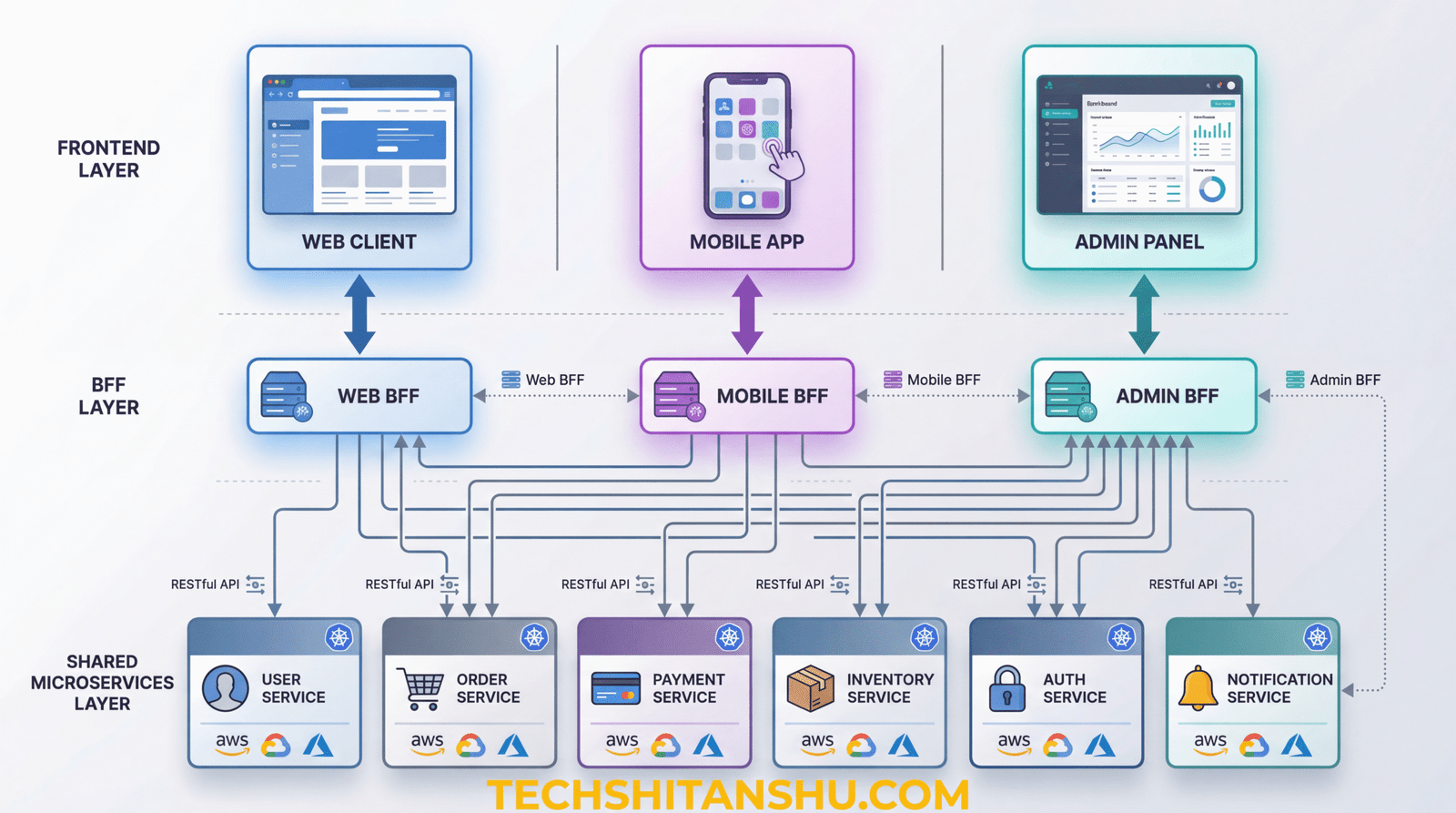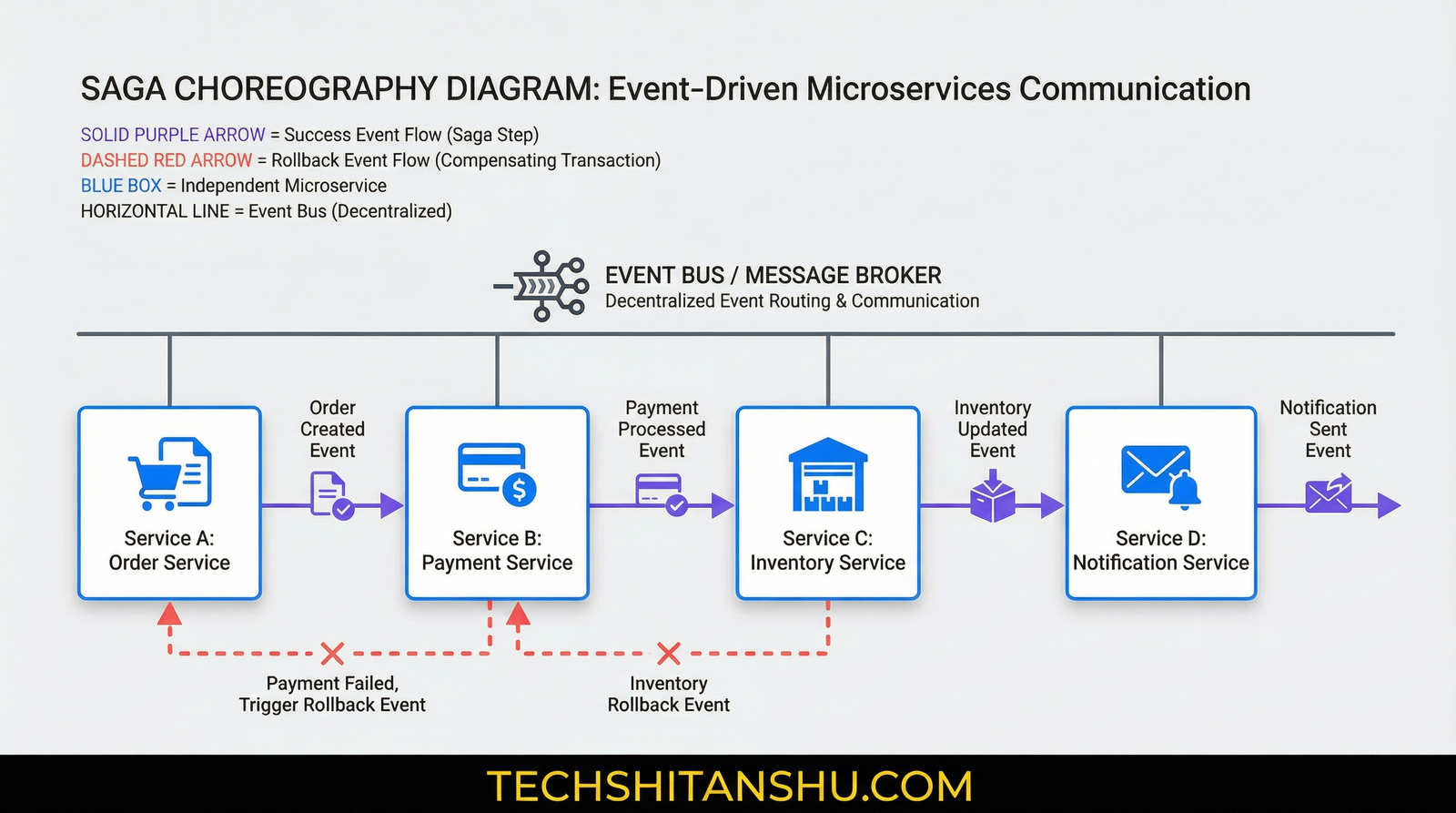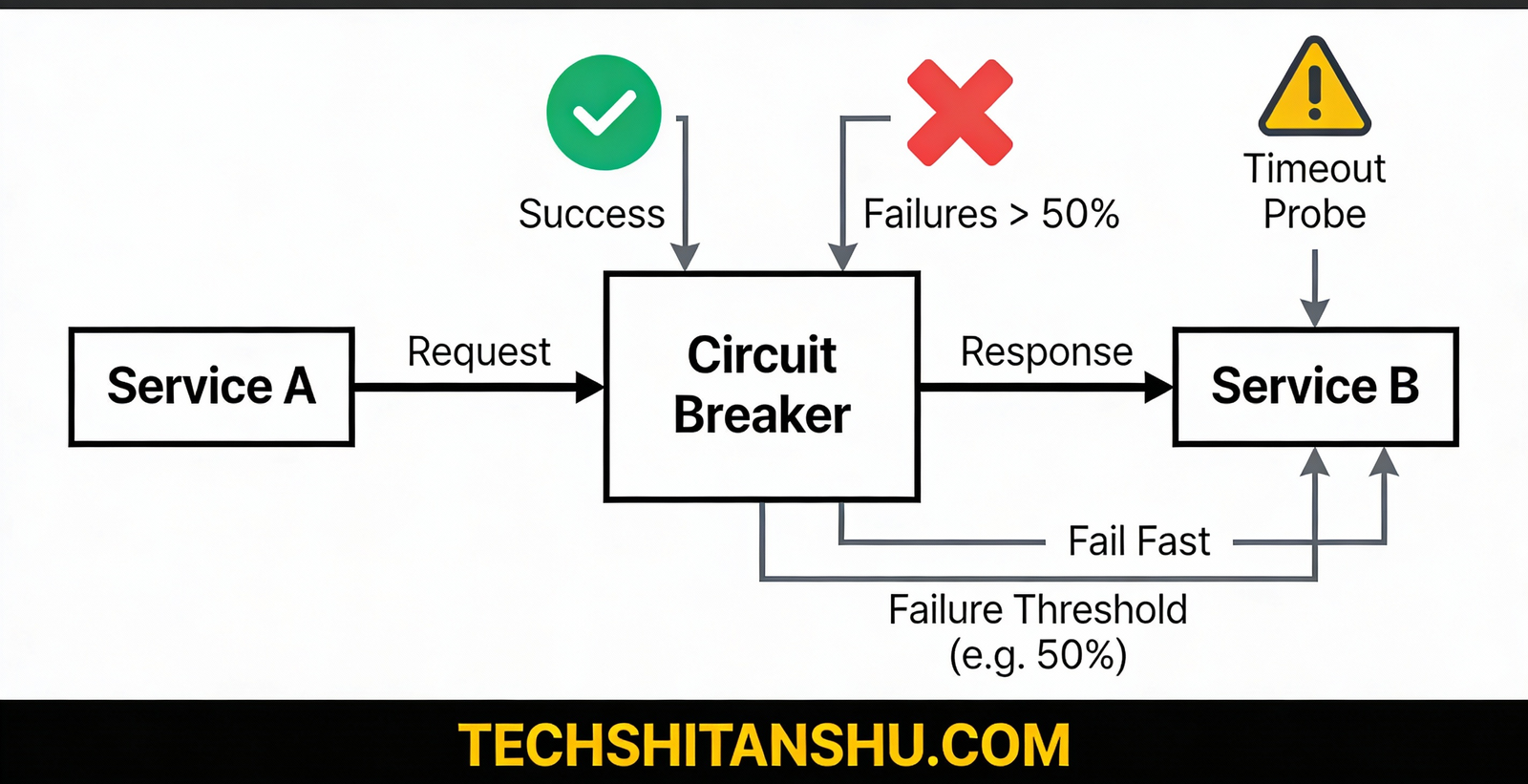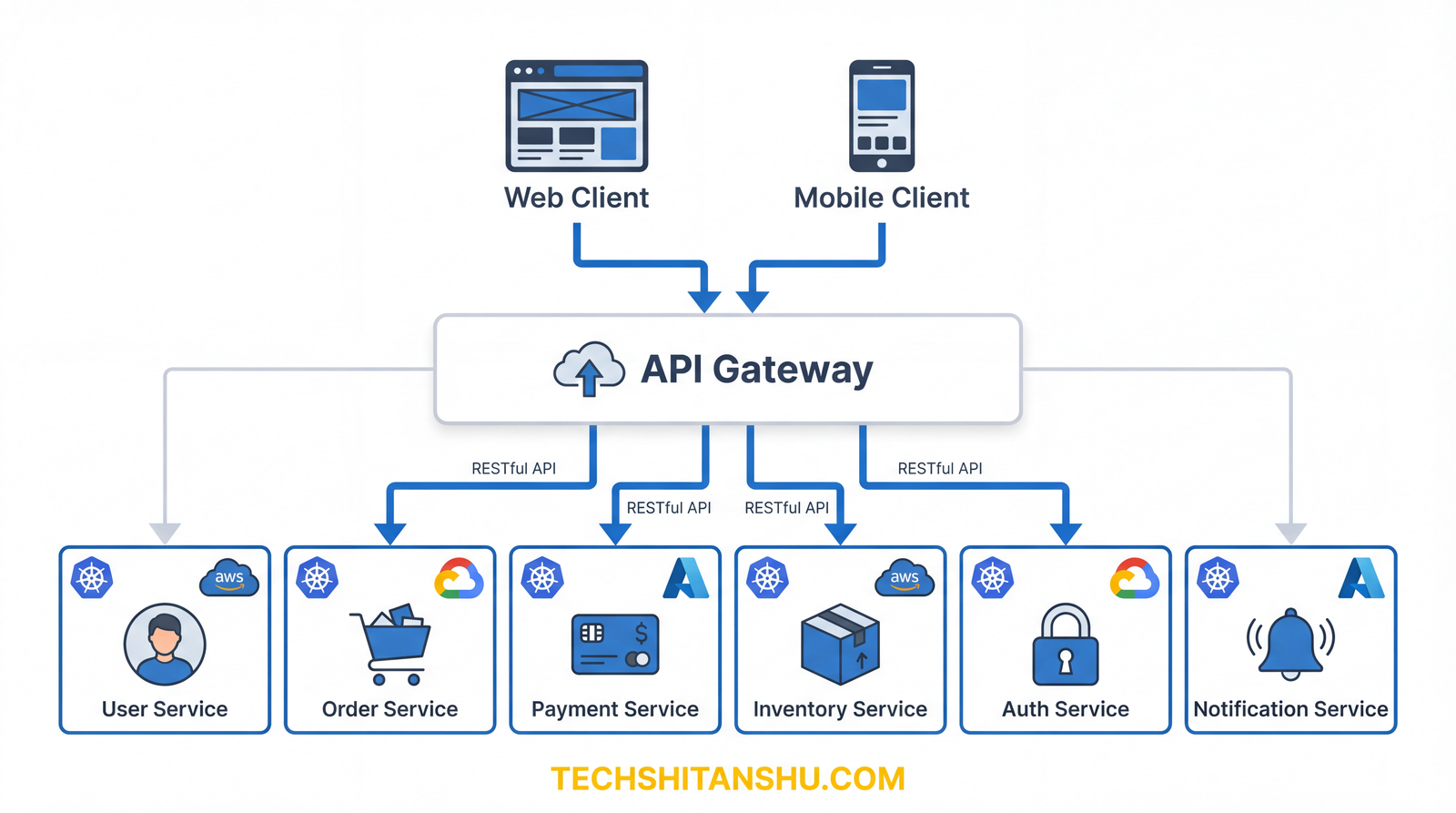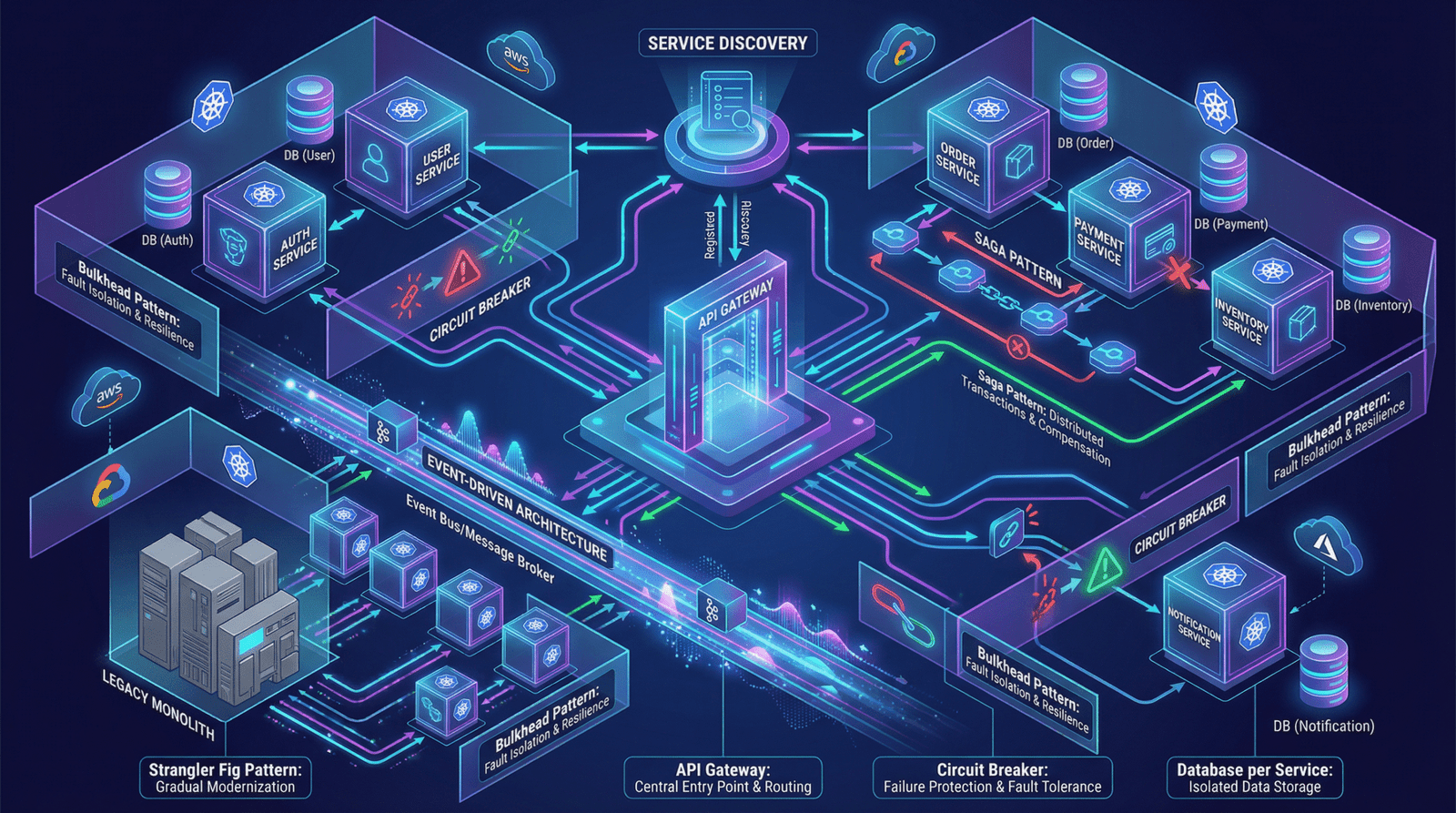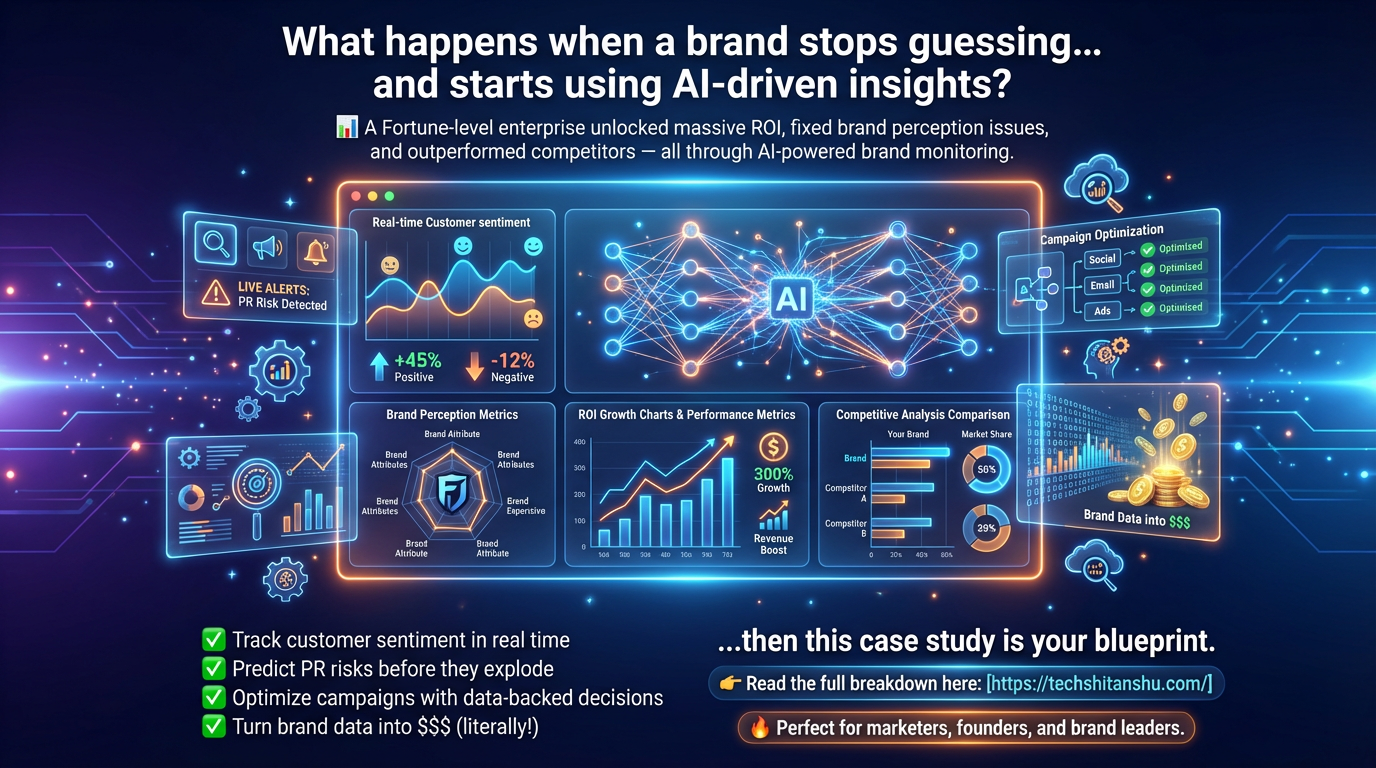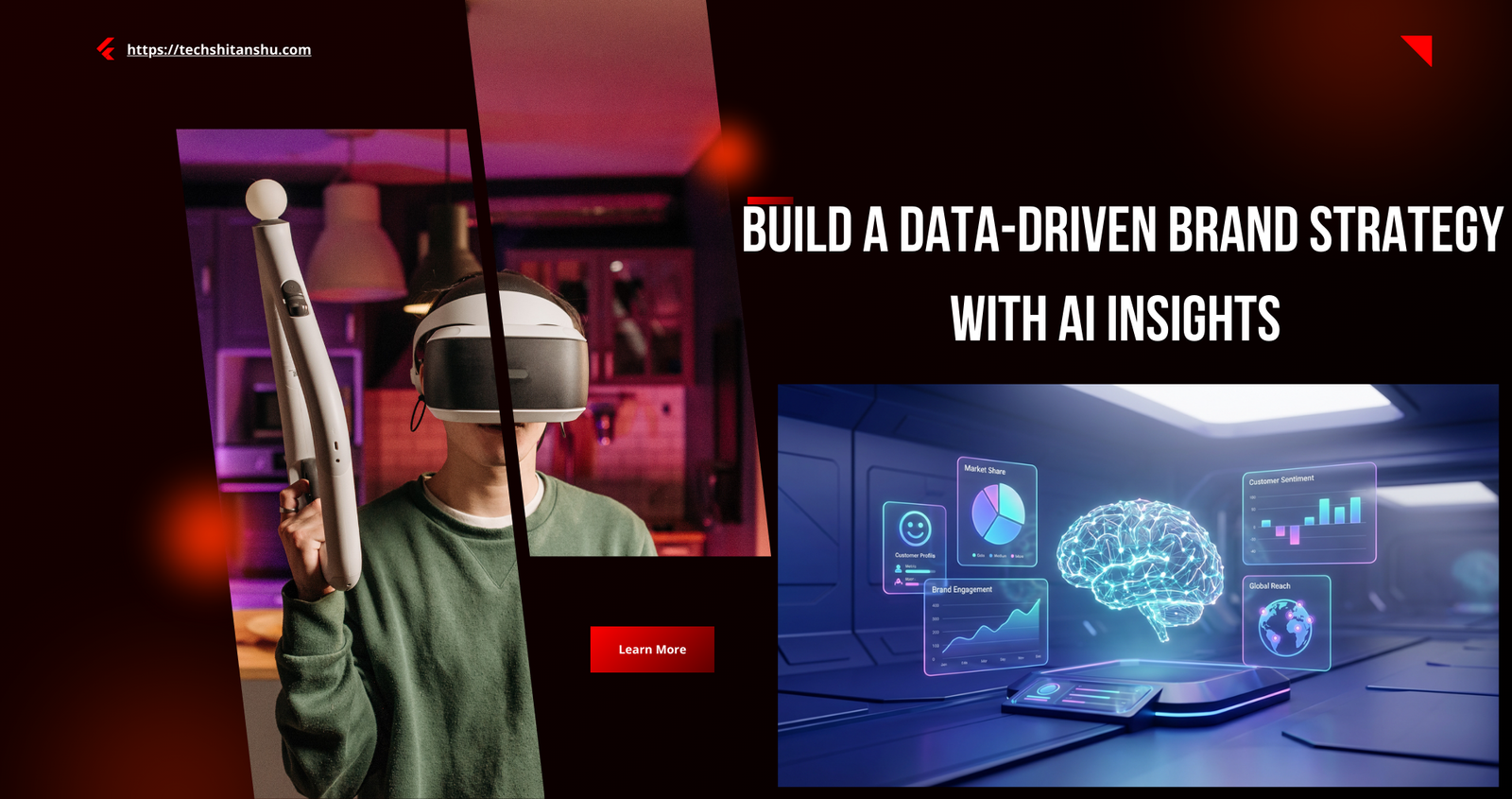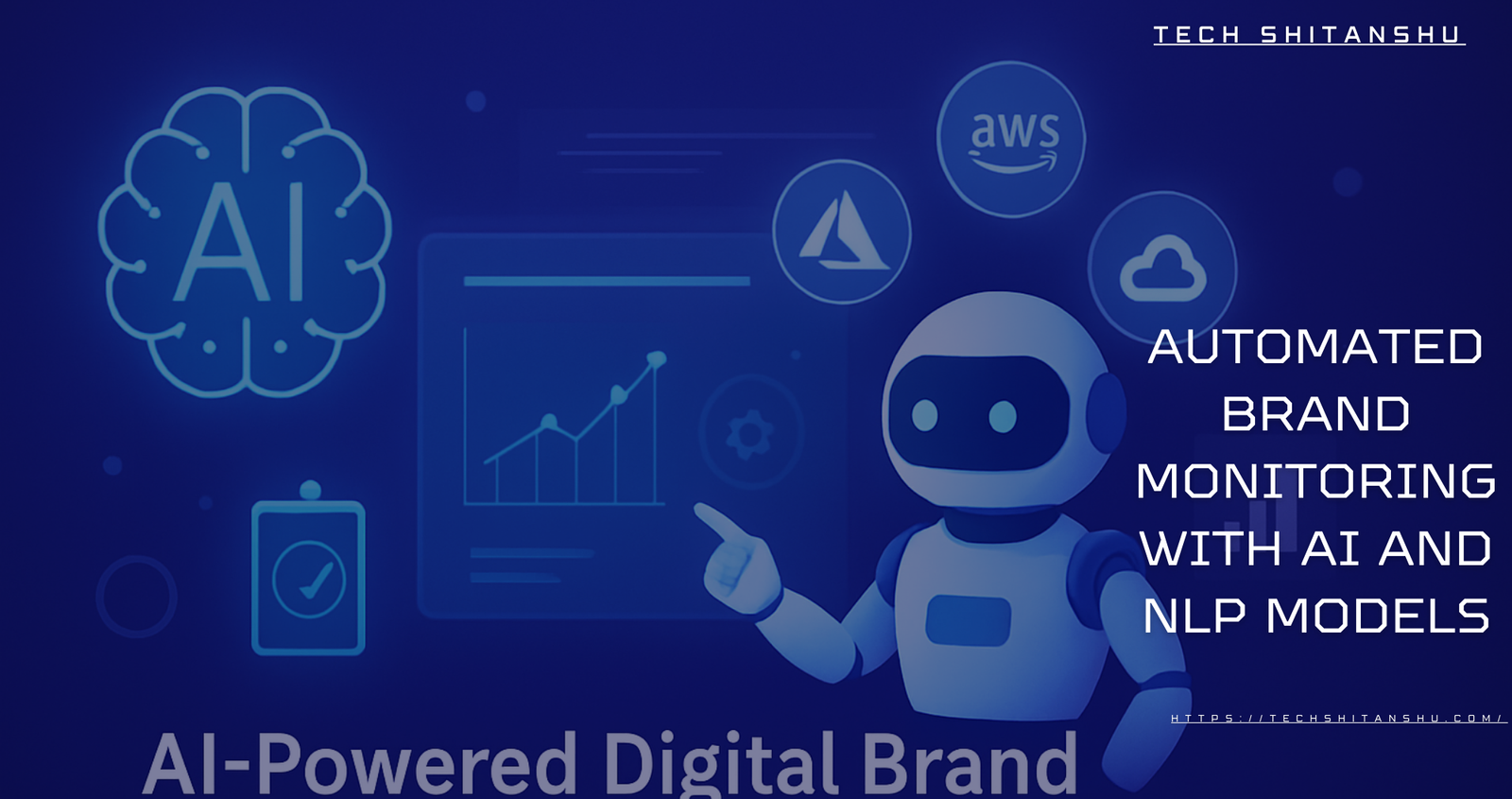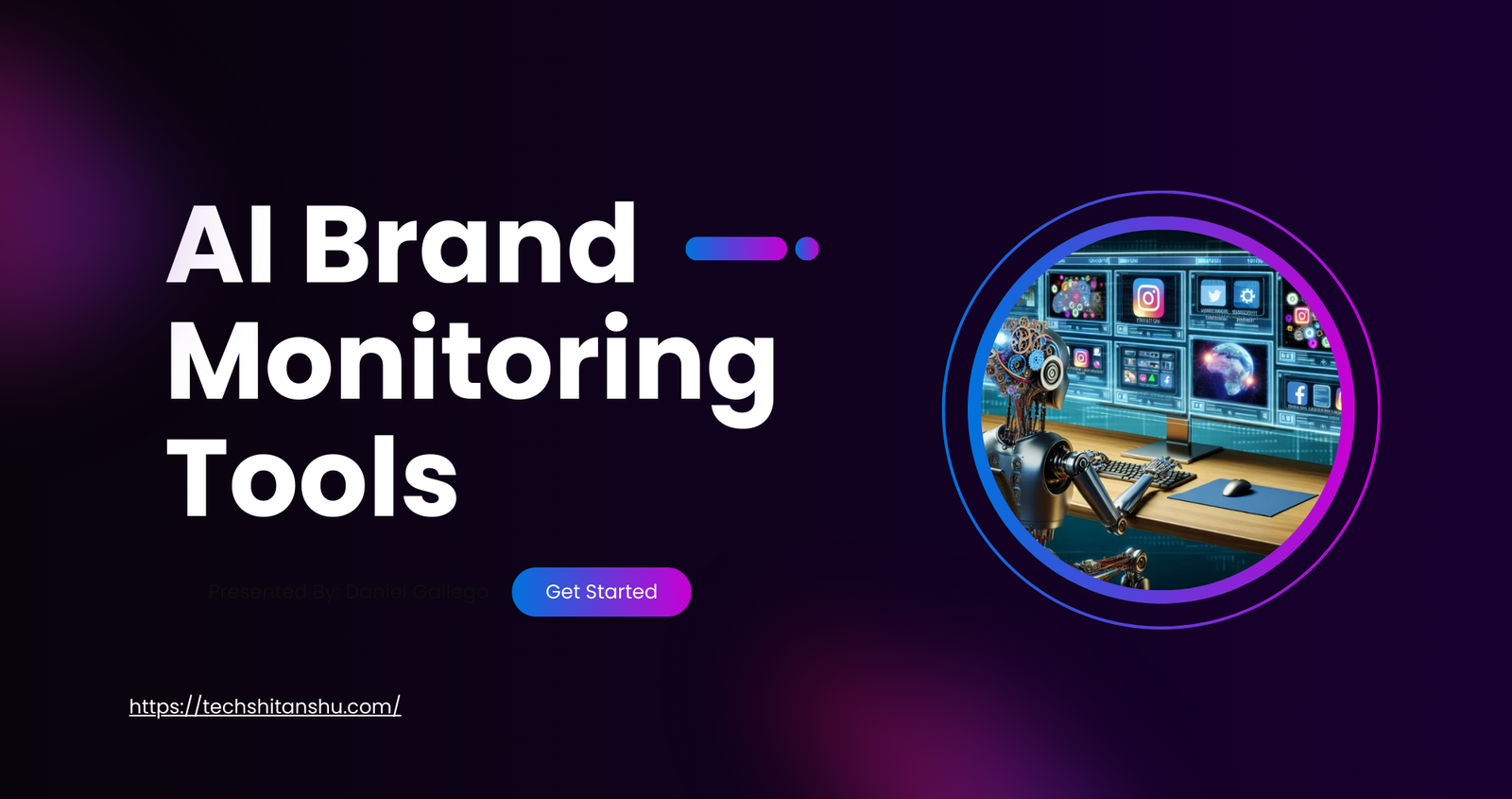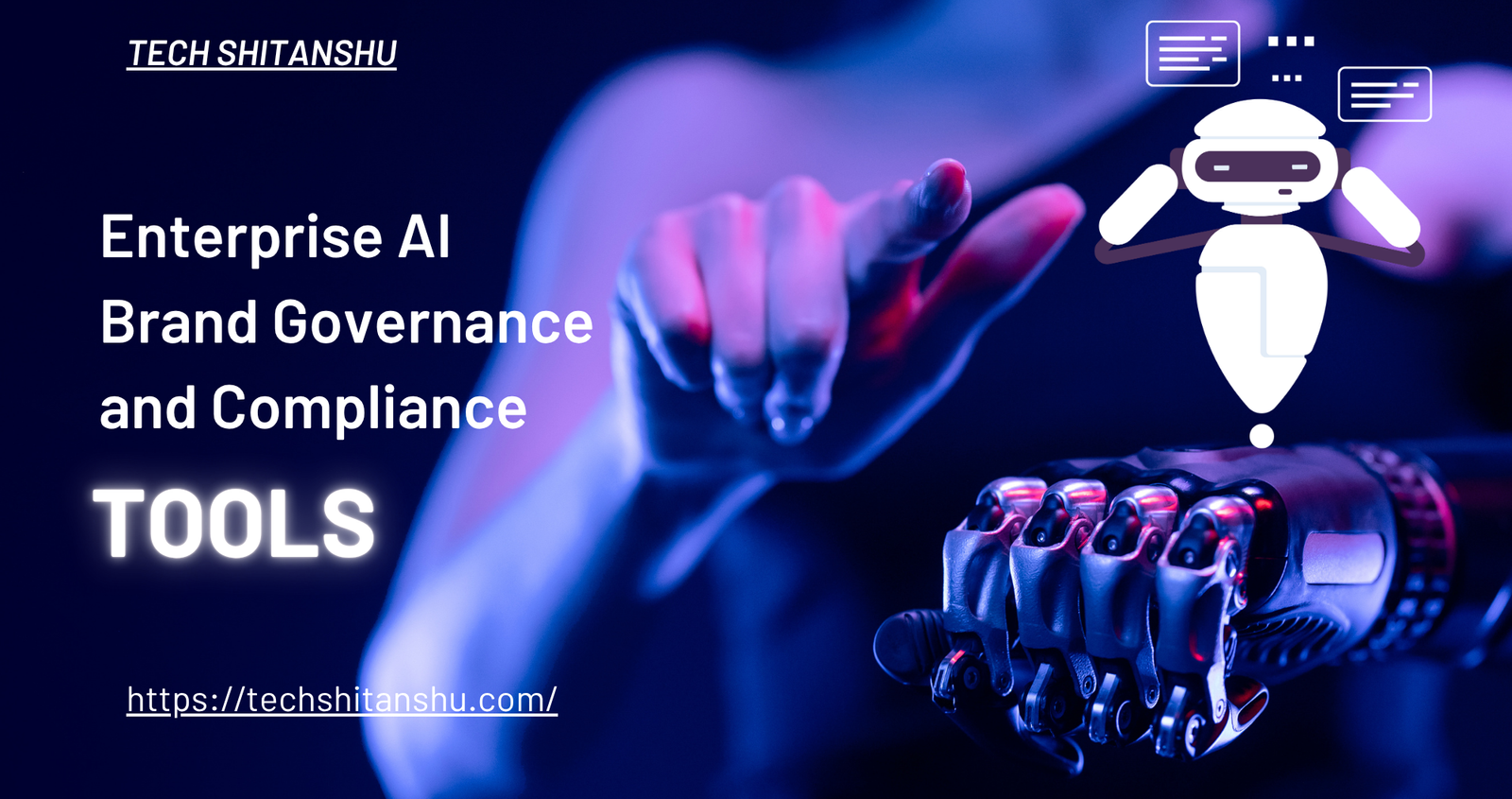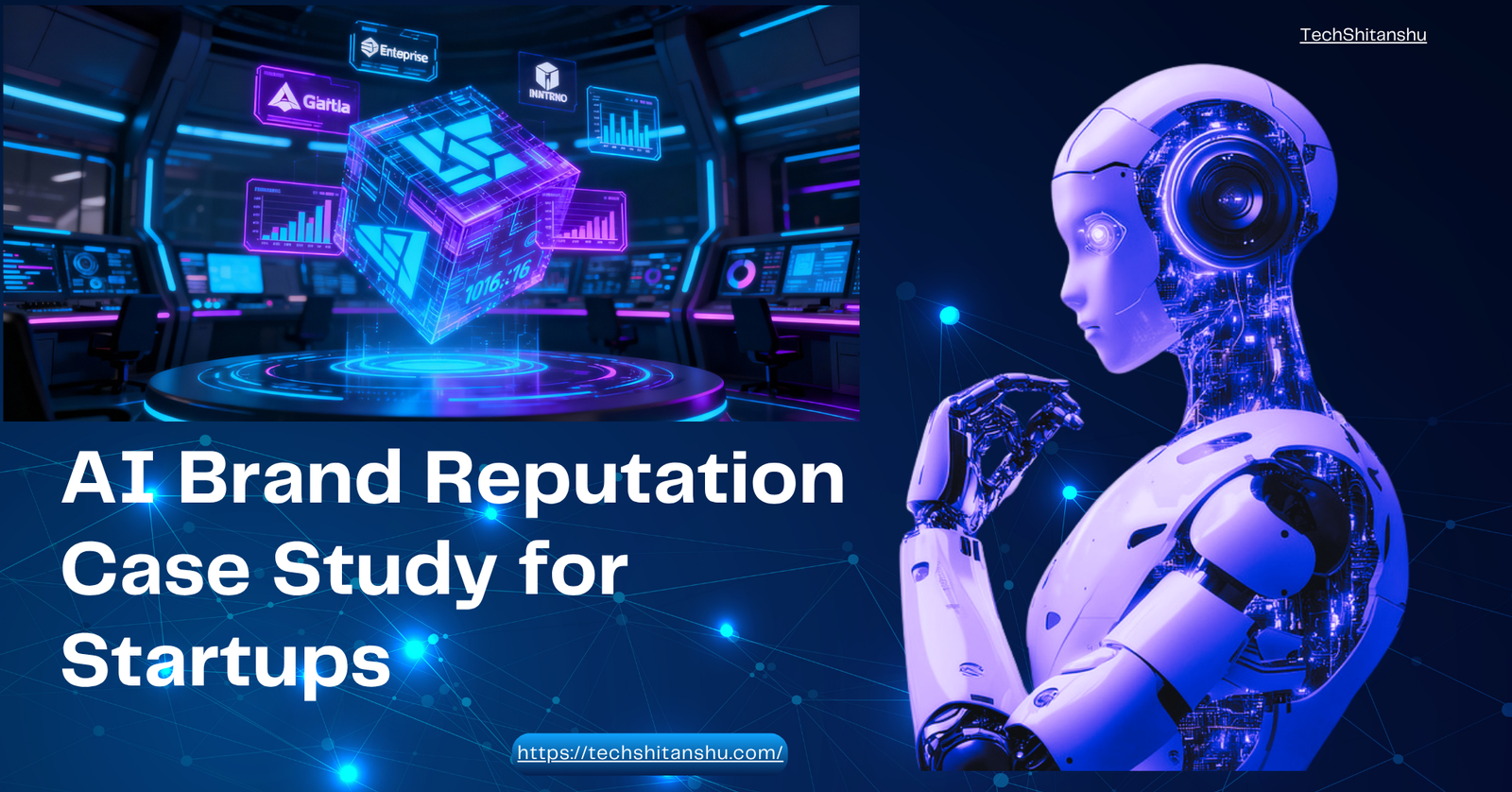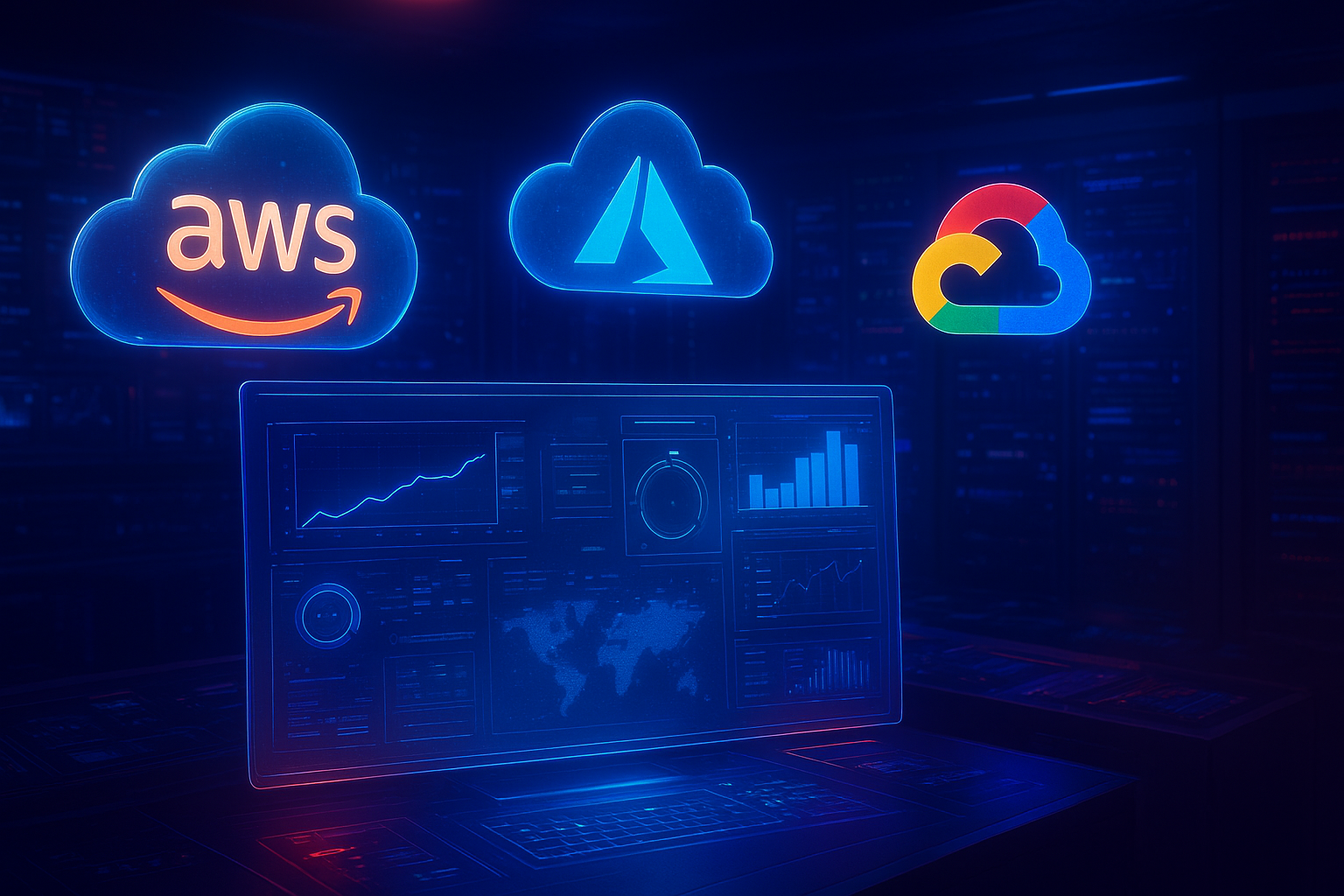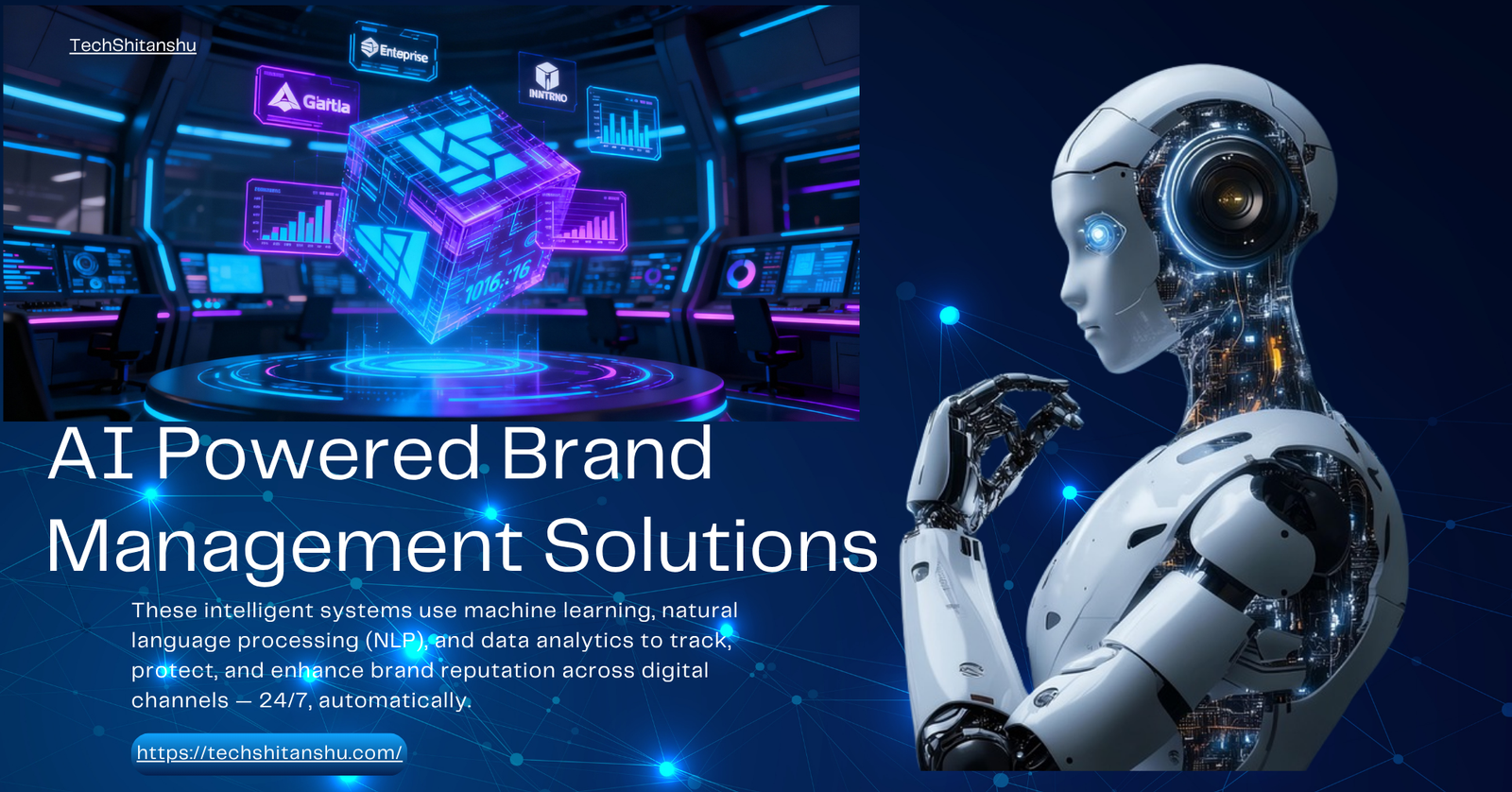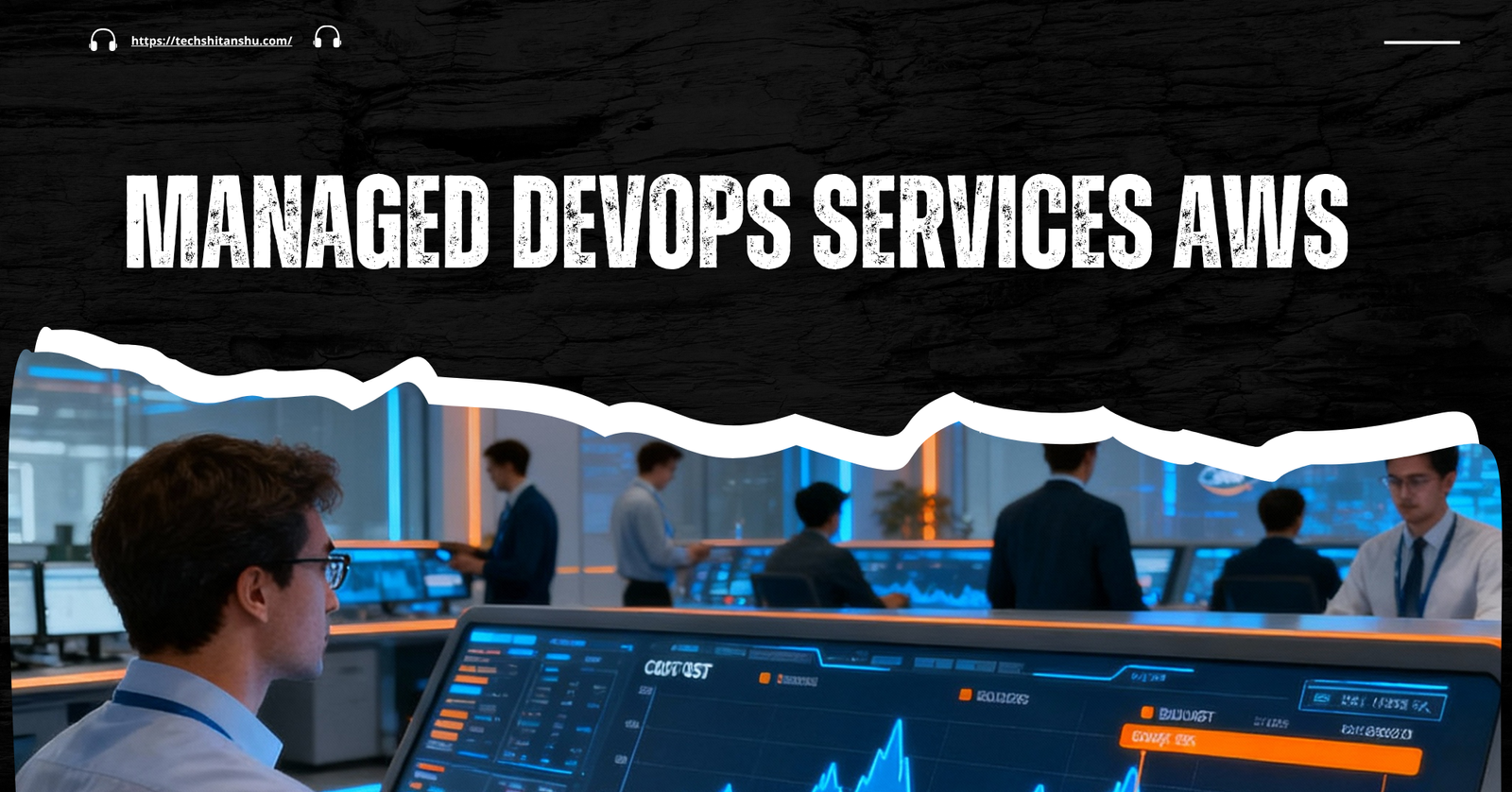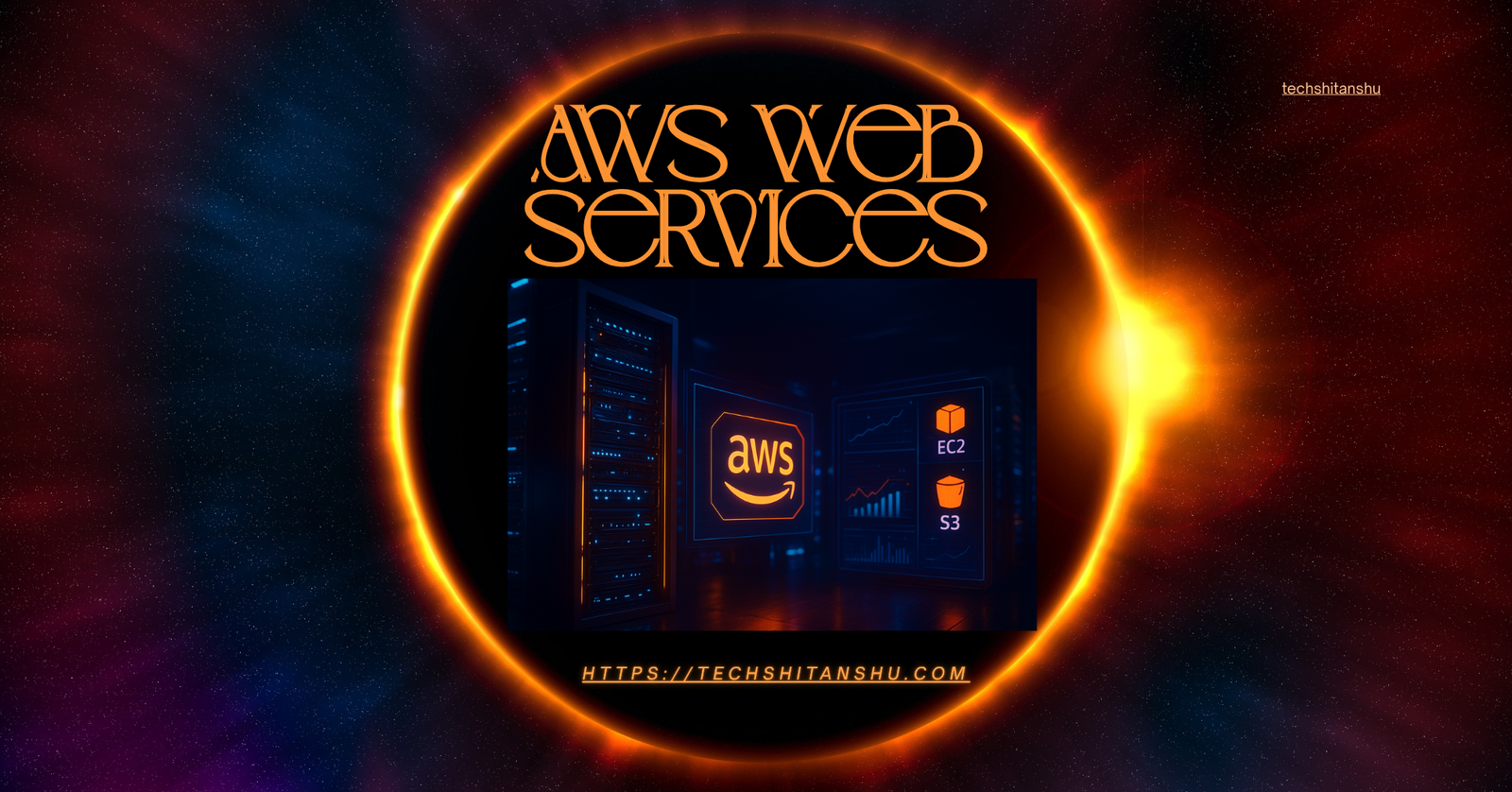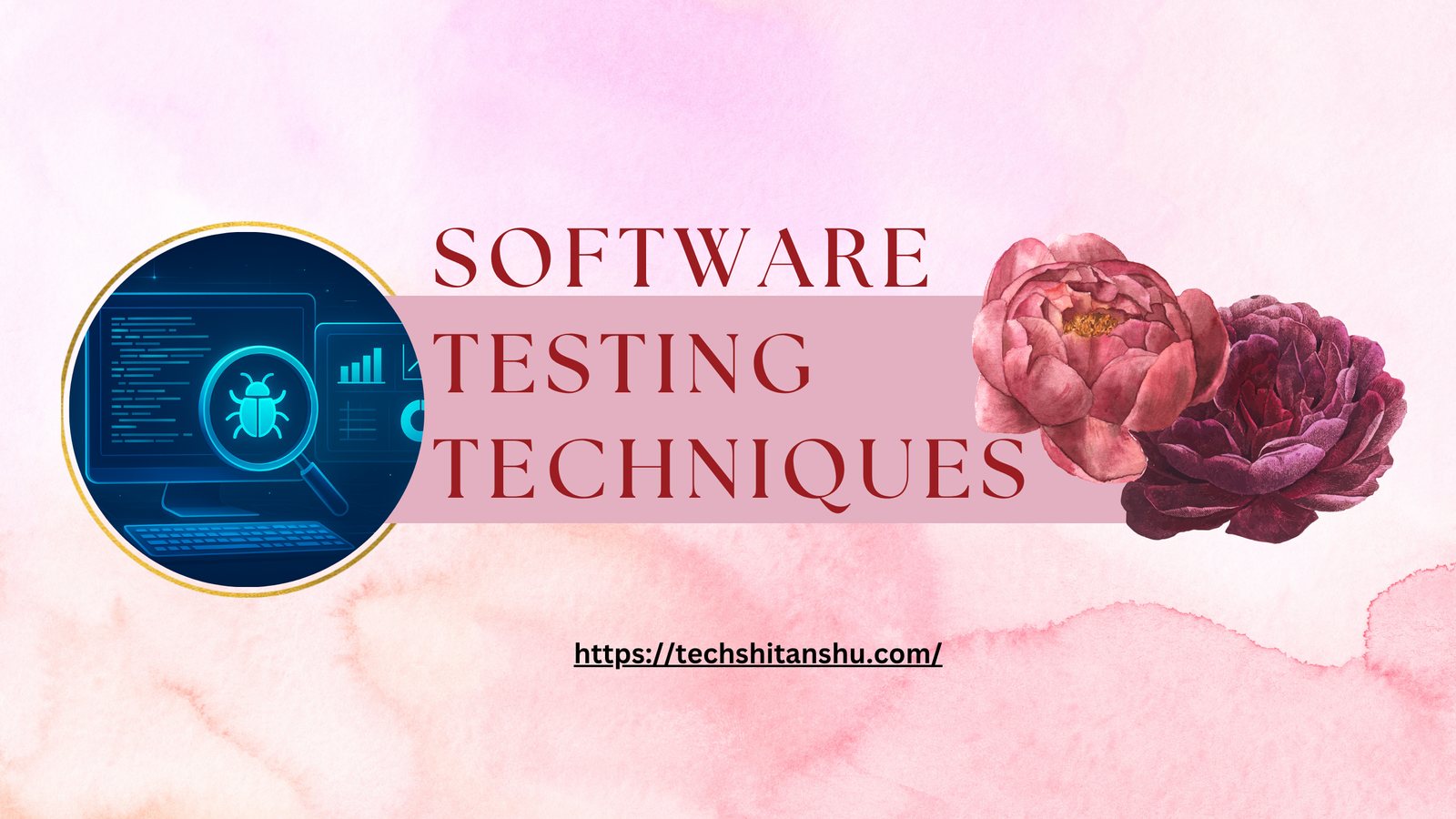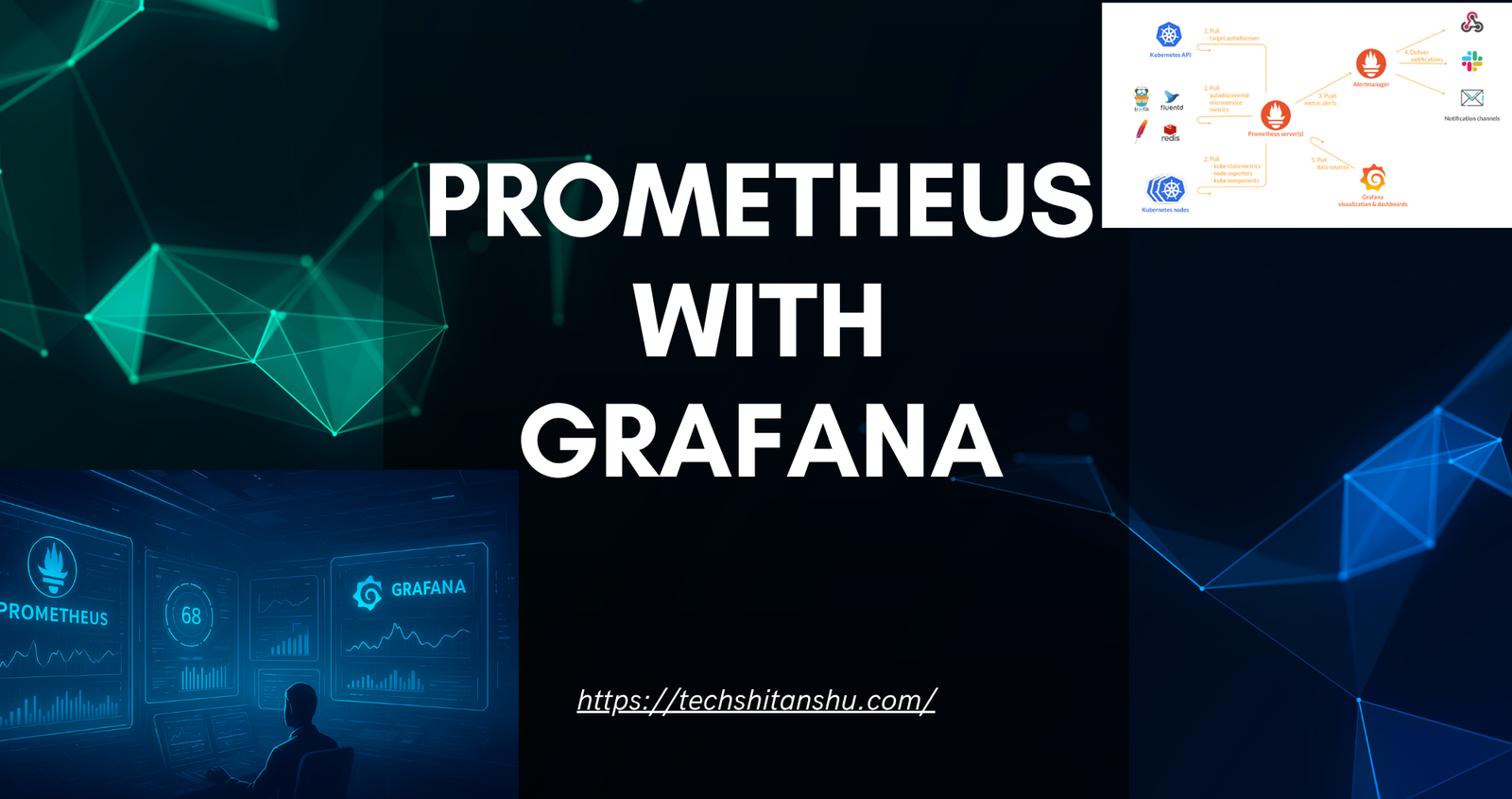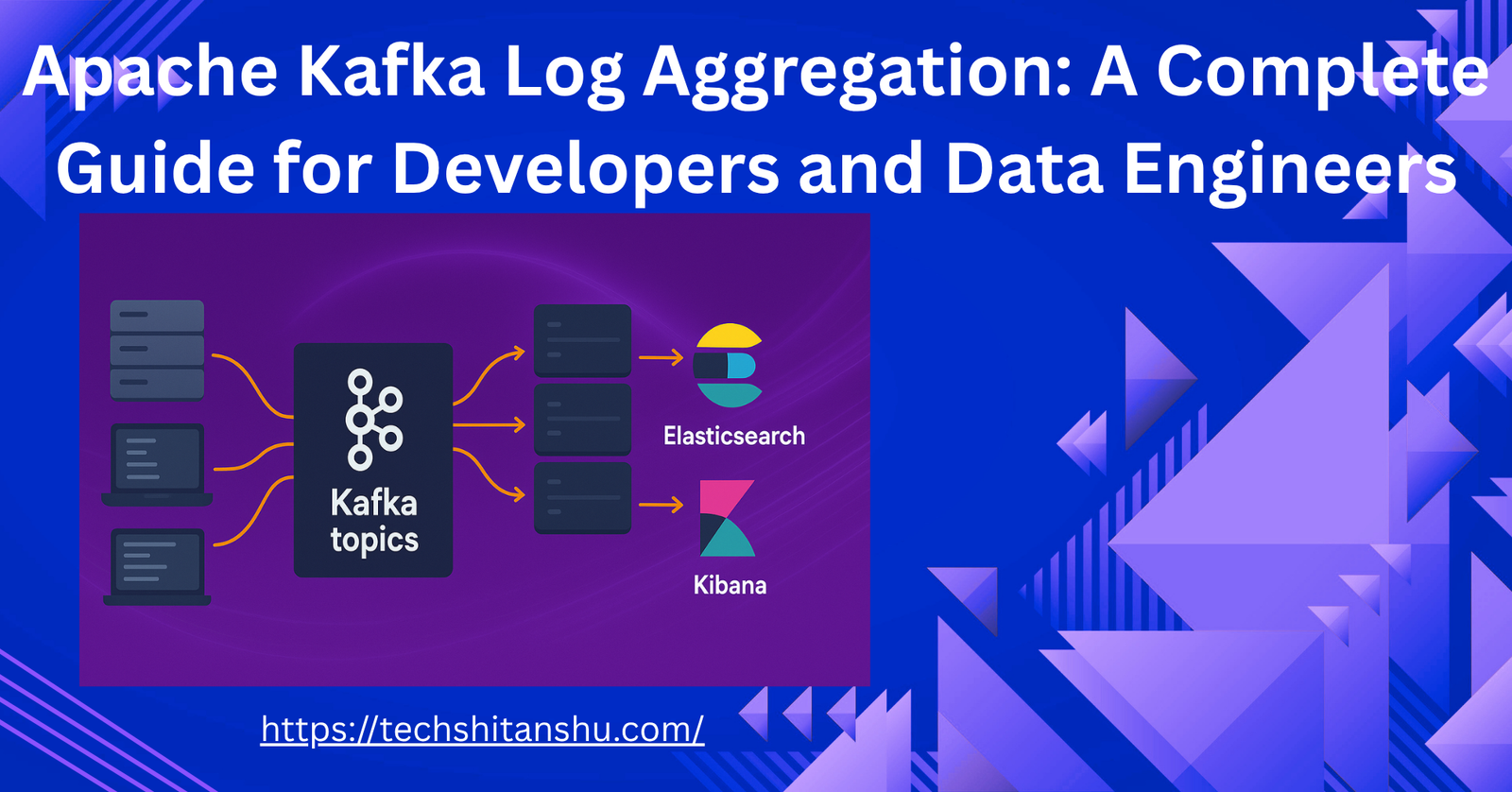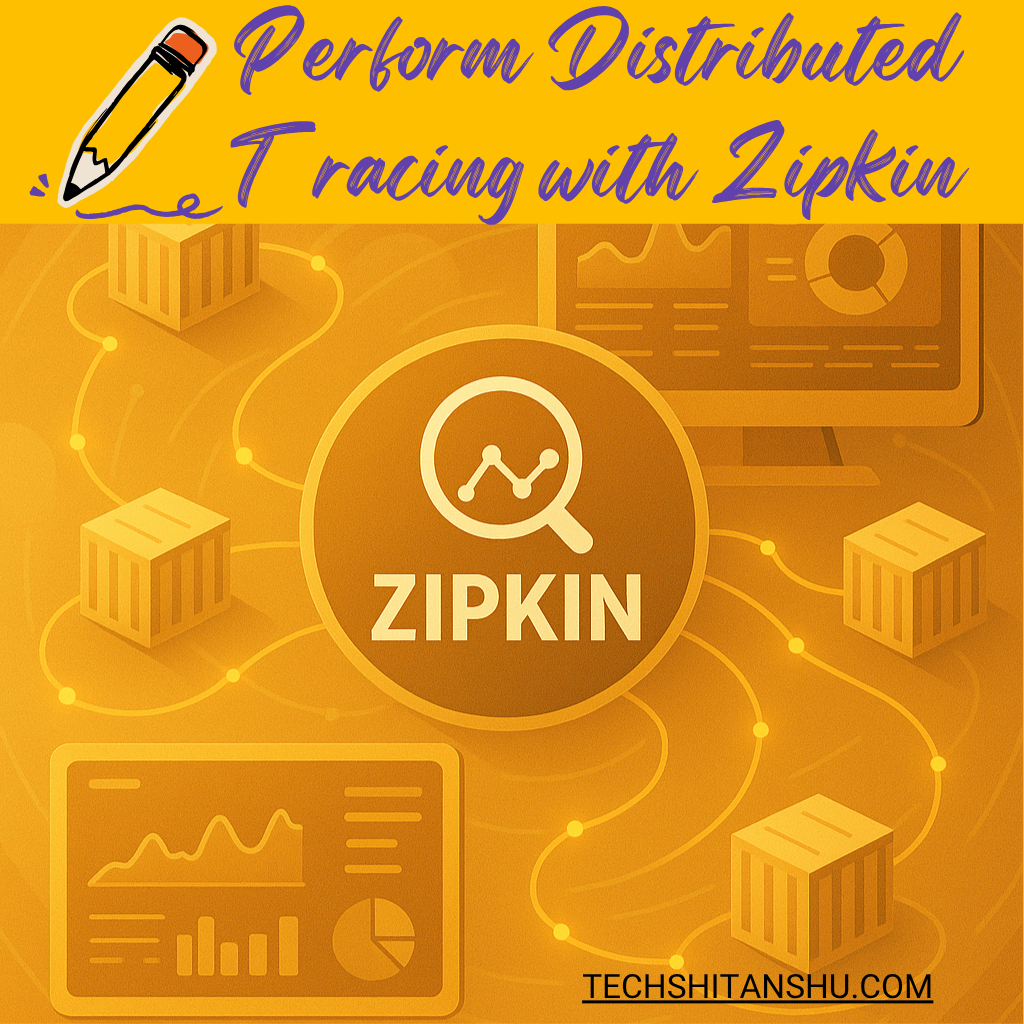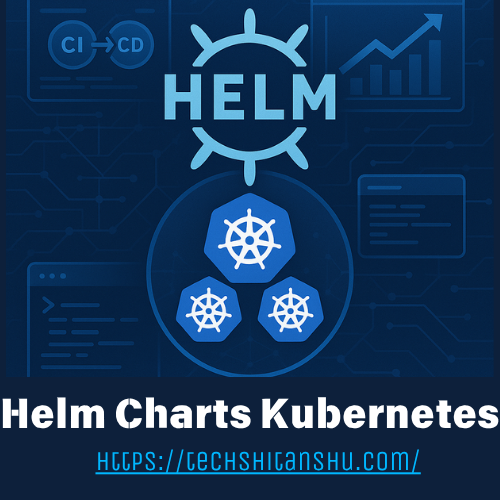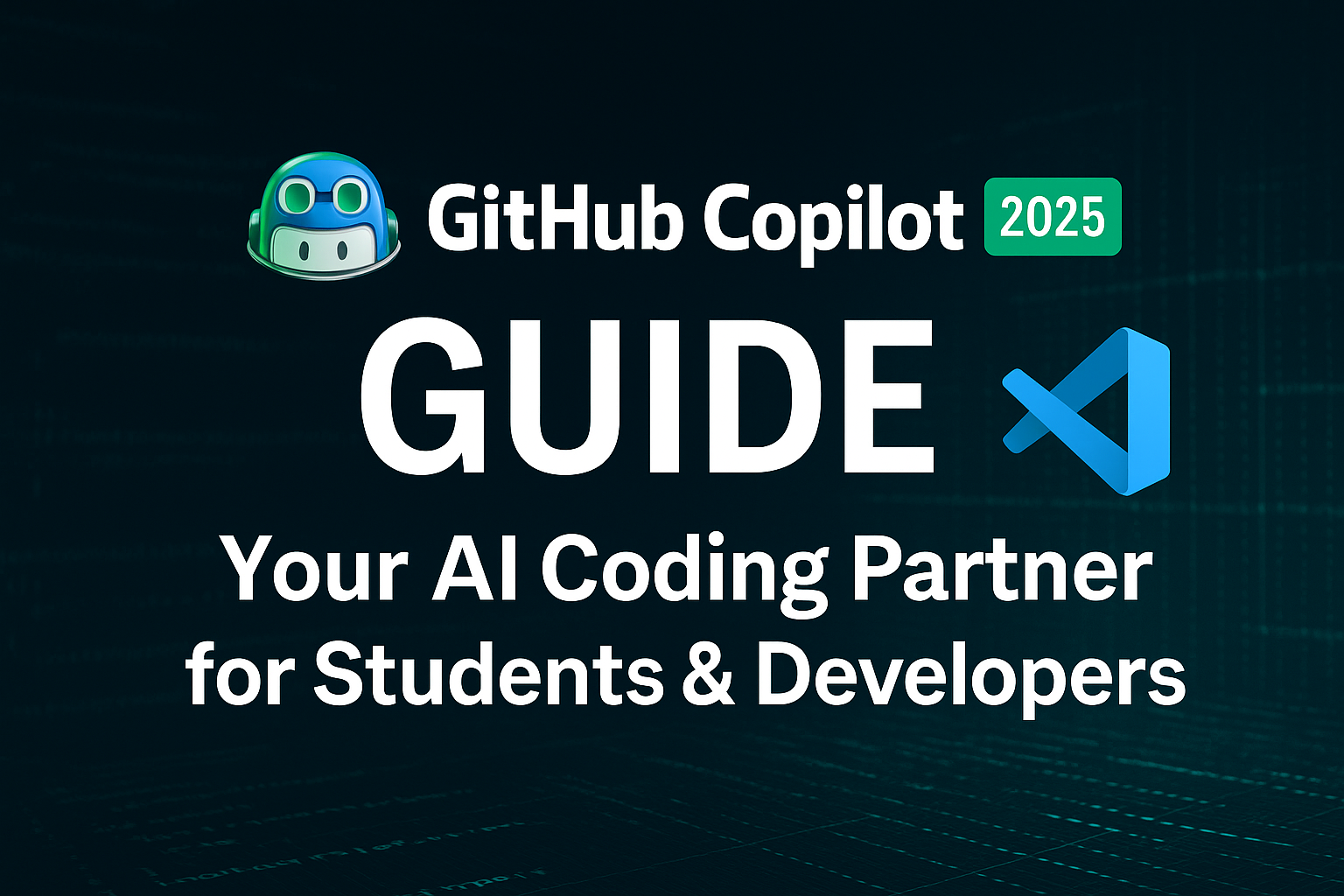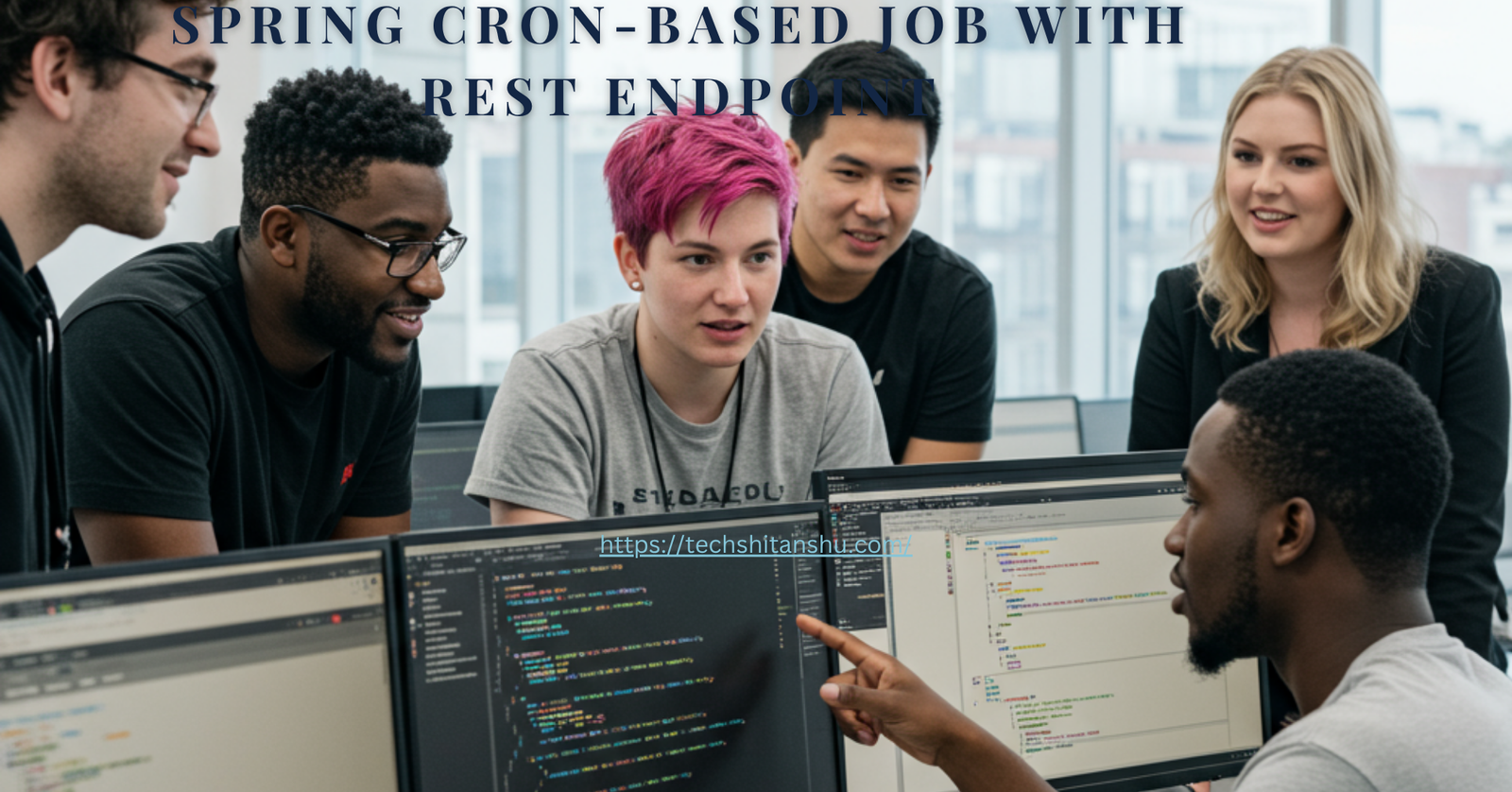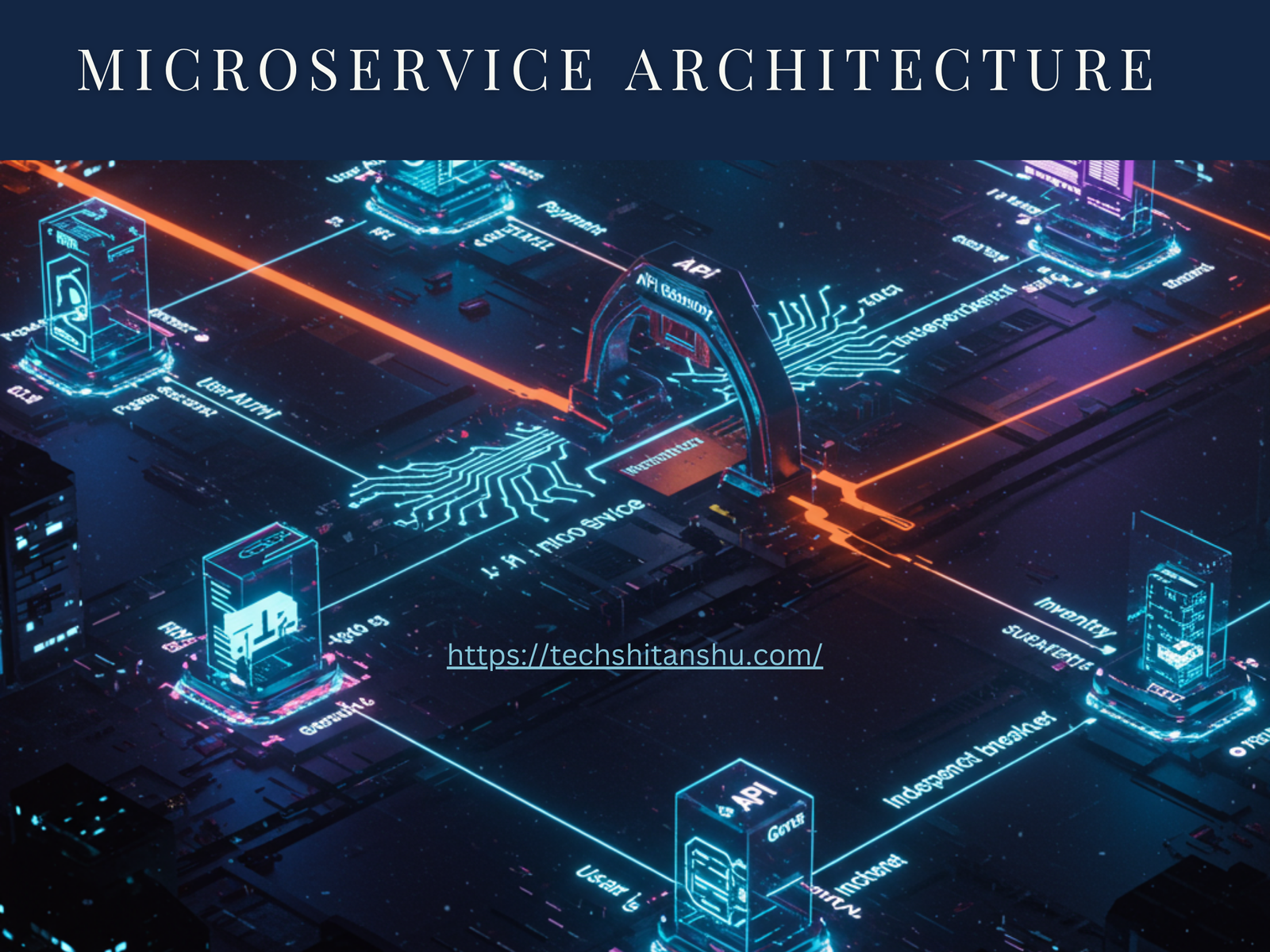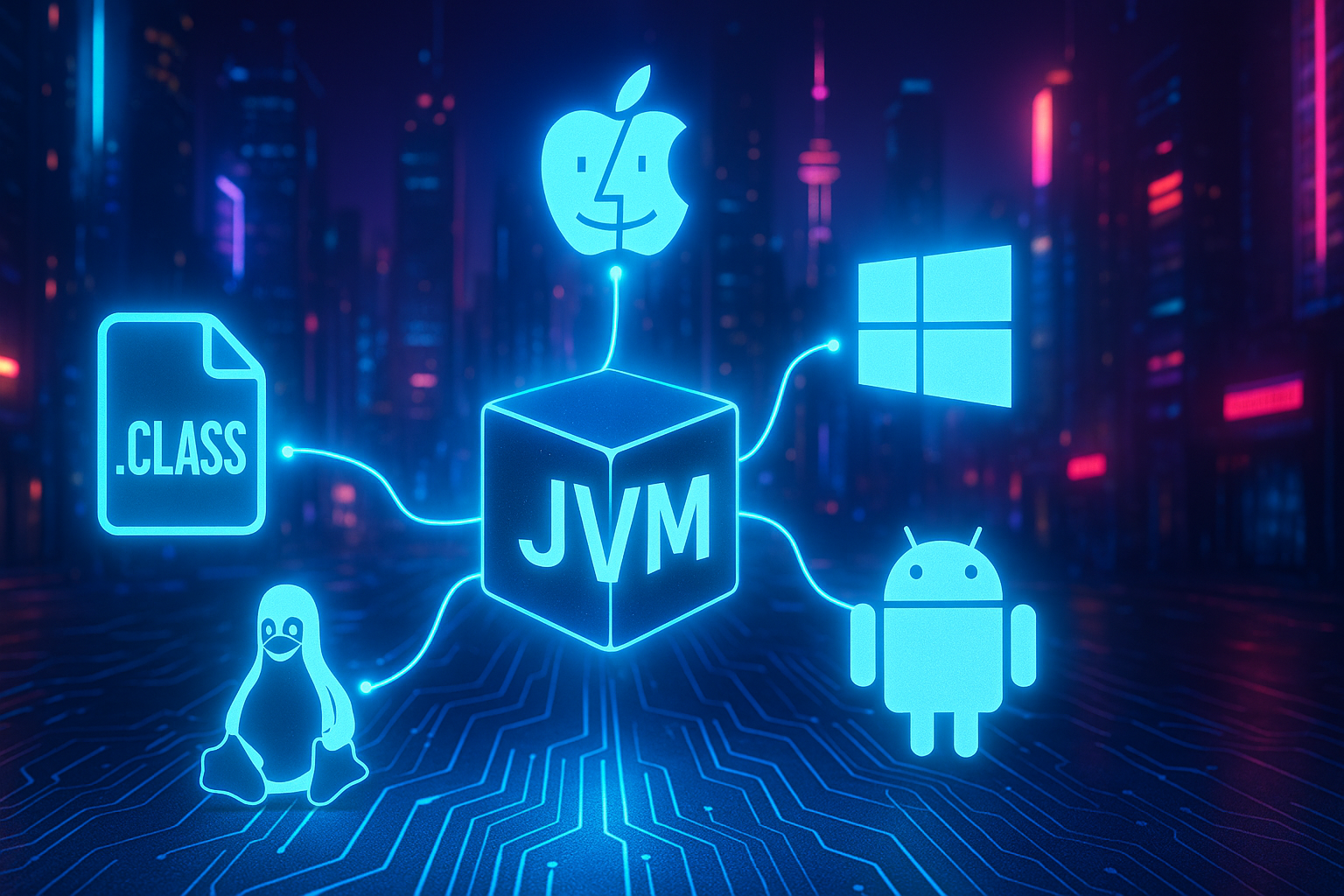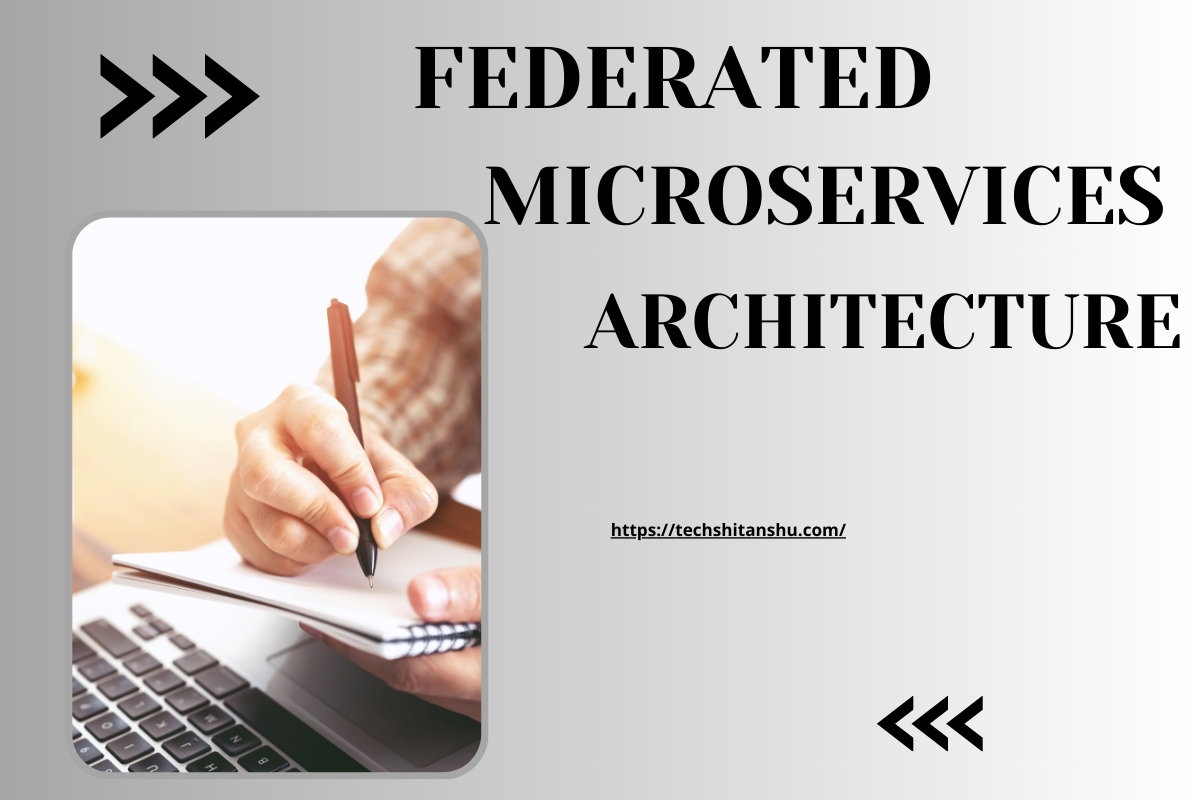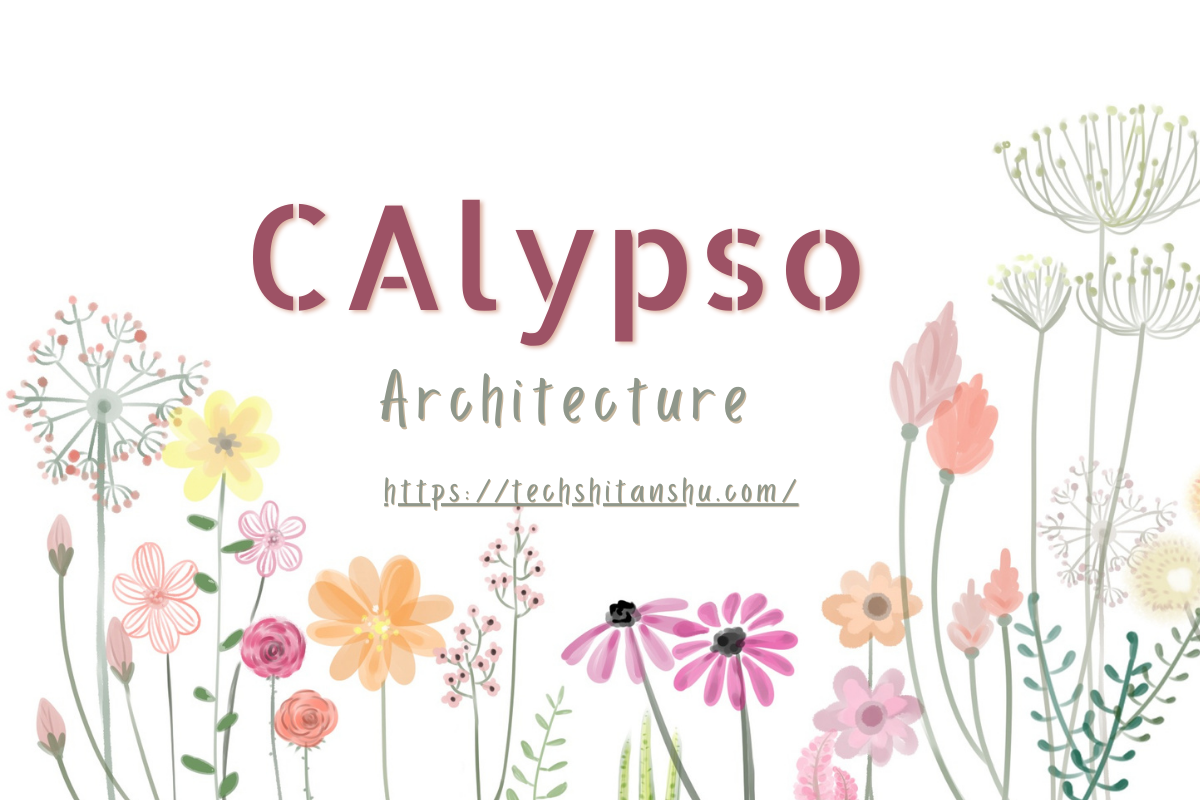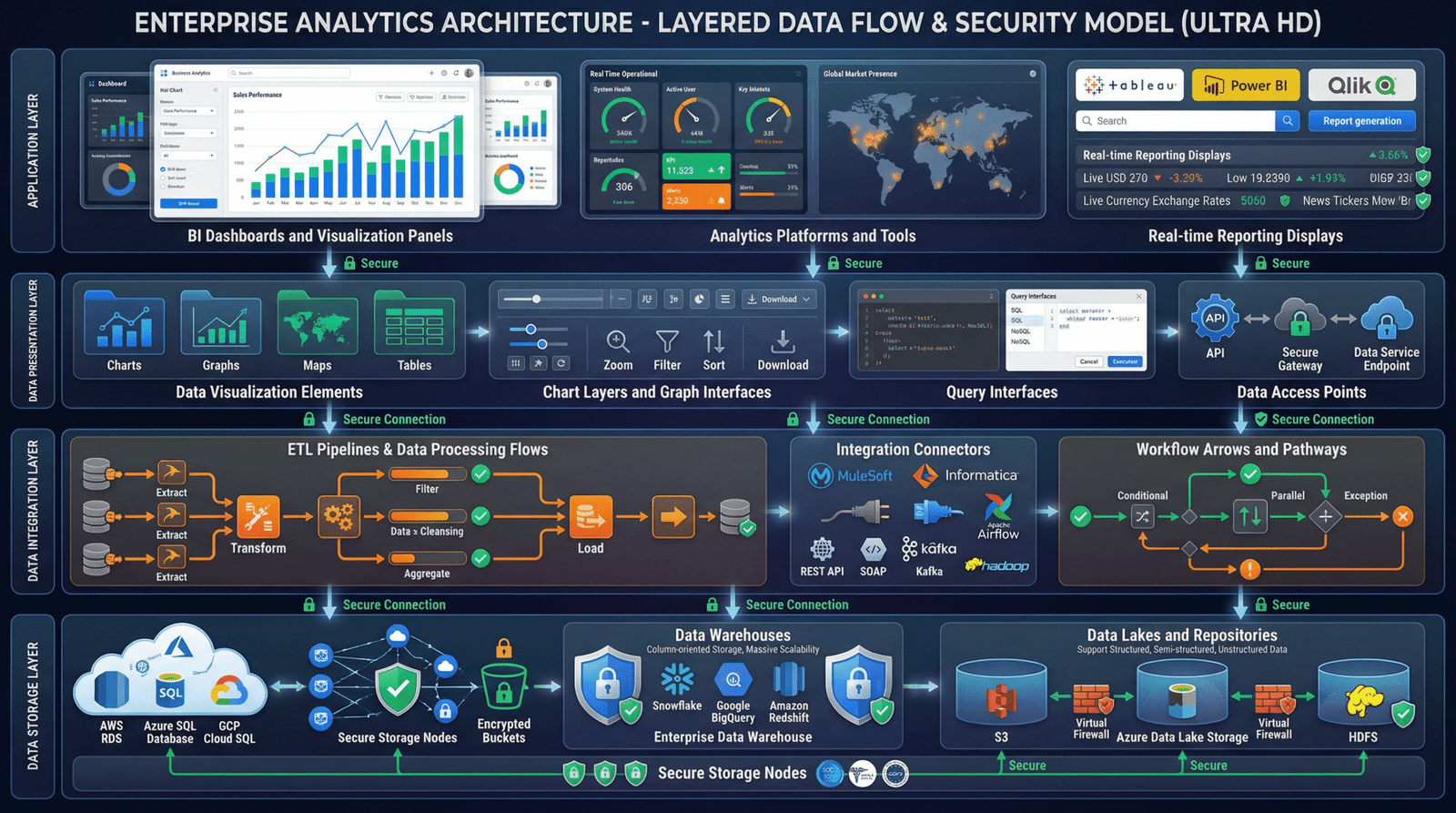TECH SHITANSHU
-
Backend for Frontend Pattern(BFF): The Ultimate Guide to Scalable & High-Performance APIs
Backend for Frontend Pattern Introduction: Why Backend for Frontend (BFF) Matters Today Modern applications no… Read More
-
Saga Pattern in Microservices
Saga Pattern – The Complete Guide to Data Consistency Without Distributed Transactions (2026) Introduction: Why… Read More
-
Circuit Breaker Pattern in Microservices
Circuit Breaker Pattern in Microservices: Build Fault-Tolerant, Resilient Systems That Don’t Collapse Under Failure (2026)… Read More
-
API Gateway Pattern – The Ultimate Guide to Secure, Scalable & High-Performance APIs (2026)
API Gateway Pattern: Why Every Microservices System Needs an API Gateway Microservices promise agility—but without… Read More
-
Microservices Design Patterns: The Complete Pillar Guide for Modern System Design (2026)
If microservices are the building blocks of modern software, design patterns are the blueprints that… Read More
-
Build a Data-Driven Brand Strategy with AI Insights
Build a Data-Driven Brand Strategy with AI Insights: A Complete Guide Branding has changed more… Read More
-
AI Brand Identity Consistency Management System 2025
What Is an AI Brand Identity Consistency Management System? Think of this system as your… Read More
-
Enterprise AI Brand Governance and Compliance Tools 2025
Enterprise AI Brand Governance and Compliance Tools: The Ultimate Guide Introduction: Why Brand Governance Matters… Read More
-
AI Brand Reputation Case Study for Startups
AI Brand Reputation Case Study for Startups (2025 Edition): How One Startup Used AI to… Read More
-
How AI Brand Management Cuts Marketing Costs 2025
How AI Brand Management Cuts Marketing Costs Introduction: The Rising Cost of Traditional Marketing In… Read More
-
AI Powered Brand Management Solutions for Enterprises 2025
AI Powered Brand Management Solutions for Enterprises Introduction: The AI Revolution in Brand Management In… Read More
-
Top 10 Powerful CSPM Tools for Rock-Solid Cloud Security Posture Management
Top 10 Powerful CSPM Tools for Rock-Solid Cloud Security Posture Management Why CSPM is the… Read More
-
Smart Ways to Estimate the Cost of Managed DevOps Services AWS
Managed DevOps Services AWS — Cost Estimate for 2025 Introduction If you’re running applications on… Read More
-
Best Cloud Server Providers in 2025: Powerful, Reliable & Scalable Solutions for Every Business
Best Cloud Server Providers in 2025: Powerful, Reliable & Scalable Solutions for Every Business In… Read More
-
AWS Web Services Revolutionizing Cloud Computing
AWS Web Services Revolutionizing Cloud Computing In today’s digital world, cloud computing has become the… Read More
-
Essential Software Testing Techniques Every Engineer Should Know in 2025
Essential Software Testing Techniques Every Engineer Should Know in 2025 In the journey of building… Read More
-
Prometheus With Grafana
Incredible Benefits of Using Prometheus with Grafana for Modern DevOps Monitoring in 2025 Introduction In… Read More
-
Grafana Dashboard Explained: Ultimate Guide for Monitoring & Visualization (2025)
Grafana Dashboard Explained: Ultimate Guide for Monitoring & Visualization If you’ve ever wanted to see… Read More
-
Apache Kafka Log Aggregation: A Complete Guide for Developers and Data Engineers
Apache Kafka Log Aggregation: A Complete Guide for Developers and Data Engineers Apache Kafka is… Read More
-
Top Open Source Log Aggregation Tools : Full Guide for DevOps & Engineers
Top Open Source Log Aggregation Tools (2025): Full Guide for DevOps & Engineers In today’s… Read More
-
Sleuth to Micrometer
Sleuth to Micrometer Imagine you have a big group of secret agents (a.k.a. microservices) working… Read More
-
Perform Distributed Tracing with Zipkin
Perform Distributed Tracing with Zipkin Distributed tracing is like turning on a GPS for your… Read More
-
Helm Charts Kubernetes
Helm Charts Kubernetes Think of Helm as the “apt” or “yum” of Kubernetes—it’s your go-to… Read More
-
GitHub Copilot
GitHub Copilot Imagine you’re writing code, and there’s a smart friend sitting next to you.… Read More
-
Spring job to use new service
Spring Batch to use new service In the world of enterprise applications, data is everywhere.… Read More
-
Spring Cron-Based Job with REST Endpoint
Spring Cron-Based Job with REST Endpoint What is Spring Cron-Based Job with REST Endpoint ?… Read More
-
Microservice Architecture
Microservice Architecture What is Microservice Architecture? Microservices is a cloud-native architectural style where an application is built… Read More
-
Why java is platform independent
Why java is platform independent Java is platform independent because it uses a clever “write once,… Read More
-
Federated Microservice Architecture
Federated Microservice Architecture Federated Microservice architecture is a strategic blueprint for IT systems that fosters coordinated management… Read More
-
Java application architecture
Java application architecture Java application architecture Enterprise OSGi combines two of Java’s most enduringly popular… Read More
-
Enterprise System Integration Patterns
Enterprise System Integration Patterns Enterprise integration is the task of making separate applications work together… Read More
-
Publisher Subscriber Architecture Design Pattern
Publisher Subscriber Architecture Design Pattern Publisher Subscriber (Pub/Sub) is a popular architectural design pattern used… Read More
-
Notification Architecture Design Pattern
Notification architecture design pattern Table of Contents What is Notification Architecture Design Pattern (Notification Architecture… Read More
-
Enterprise Data Warehouse (EDW) architecture
Enterprise Data Warehouse (EDW) Architecture – A Complete Guide In today’s data-driven world, data is… Read More
-
Powerful GitHub Features Every Developer Should Master in 2025
Powerful GitHub Features Every Developer Should Master in 2025 GitHub has become the heartbeat of… Read More
-
Service Discovery Pattern – Comprehending Microservices Design Patterns
Service Discovery Pattern – Comprehending Microservices Design Patterns Modern software systems are no longer monoliths… Read More
-
Event Driven Architecture Pattern
Event Driven Architecture An event driven architecture uses events to trigger and communicate between decoupled… Read More
-
DevOps Architecture
DevOps Architecture DevOps architecture brings together teams from development and operations to make the software… Read More
-
CI/CD pipelines for code deployment using Jenkins
CI/CD pipelines for code deployment using Jenkins CI-CD Pipeline in Jenkins What does a CI/CD… Read More
-
Modern Cloud infrastructure
Modern Cloud Infrastructure To grasp why it’s crucial to distinguish between different types of changes… Read More
-
Pipes and Filters Architecture Design Pattern
Pipes and Filters Architecture Design Pattern In today’s world of microservices, data pipelines, and stream… Read More
Author Details

Shitanshu Kaushik
Shitanshu is a career software developer with a habit of finding novel ways to break things.
Follow Us
Popular Tags
ai brand management AI brand monitoring AI marketing tools ai tools 2025 brand performance tracking Cloud Native Architecture DevOps java java 17 features Java 2025 java interview question Java programming Java Tutorials Kubernetes Microservices Architecture Microservices Design Patterns Monitoring & Observability online reputation management Software Engineering techshitanshu
